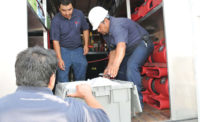The Growing Need for Spanish-Language Training & Education in the Restoration Industry
Learning to hire & promote to foster your company's success.

The restoration industry is demanding, and ever-changing. It’s also diverse. Did you know some of the industry’s most successful company owners and employees speak English as a second language? Their first: Spanish. There are no hard statistics on how many Hispanics work in restoration, but we can make some guesses. A 2011 study from the US Dept. of Labor states that 1 in 4 construction workers are Hispanic. The US Census Bureau states the Hispanic population was over 50 million in 2010. Those numbers imply a significant percentage of restoration industry bosses, employees and customers speak Spanish primarily, and English when needed.
Every day, restoration businesses find great Hispanic workers, but are not finding effective ways to train their workers. According to OSHA, workplace injuries are more than 20 percent higher for Hispanic employees than other groups. There are several reasons for this increase – not the least of which is training.
OSHA requires employers to train in safety and health in a “manner that employees are capable of understanding” and has a few resources for Spanish-speaking employees. Additionally, most safety supply companies provide resources in Spanish. Providing training in Spanish will reduce injuries, lower insurance premiums and improve the morale in your company.
Several restoration distributors provide Spanish training courses. The IICRC now has Spanish language certification exams available in:
- Water Restoration Technician (WRT)
- Fire and Smoke Restoration Technician (FSRT)
- Carpet Cleaning Technician (CCT)
- Odor Control Technician (OCT)
Finally, several schools, like the Restoration Sciences Academy offer certain materials in Spanish.
Call ahead when your bilingual employees are going to courses to find out what support is available.
Tips for Hispanic worker training
- Success starts with valuing Hispanic culture. So many businesses have failed in their outreach by thinking it is only about translation. Engage in the culture, and you will be more successful.
- Make an active effort to hire more bilingual employees and supervisors.
- Some equipment manufacturers provide manuals in Spanish, so make sure you are making those available to all employees.
- Be sure all required employee information is posted in all the languages of your employees.
- Spend time working in the field with your Hispanic employees.
- Pair more experienced Spanish-speakers with newer employees.
Latino-owned businesses are growing at twice the pace of the US national average. The Hispanic population is the fastest growing minority in the US. Ignoring these trends will limit your business’ success in the future.
Looking for a reprint of this article?
From high-res PDFs to custom plaques, order your copy today!







